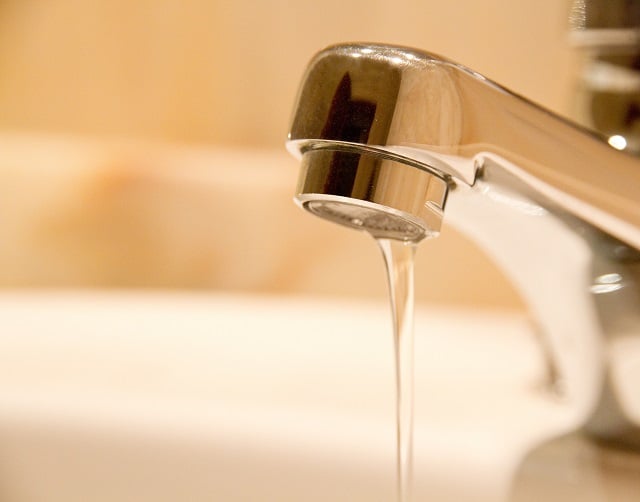
Saving water will ensure that there’s enough to go around for your community and for future generations. The best way to prevent drought and water waste is to use water efficiently. Fortunately, becoming an efficient user of water is as easy as following these simple suggestions given below. These tips will concern outdoor water use for pools and gardens, and indoor water use concerning plumbing fixtures, and other faucets and pipes.
Save Water Indoors
Bathroom
- When you’re shaving or brushing your teeth, keep the water off as much as you can.
- Take showers instead of baths. They use less water.
- Give your bathroom a mini-makeover to make it more water efficient.
- WaterSense labeled products can help you save a large amount of water.
- If you wait for the shower water to get to a comfortable temperature before you get into the shower, then you should use a bucket to collect the water that comes out of the showerhead during that time. This water can be used to water your plants.
- Take shorter showers. One way to keep track of how much time you are taking in the shower is to use a shower radio while showering. Try to get your showering time down to the length of one song.
- When washing your hands, turn off the water while lathering your hands with soap.
Kitchen
- If you choose to wash your dishes by hand, use a washbasin while washing dishes or plug the sink.
- Put a large container of water in the fridge so you won’t have to run the faucet for a while to wait for the water to get cool.
- If you are going to cook something the next day and you need to let it thaw, keep it in the fridge overnight instead of running it under hot water.
- Put food wastes in a compost pile instead of disposing of those food wastes in the garbage disposal.
- Wash dishes in a fully loaded dishwasher.
- Use an energy-efficient dishwasher.
- Instead of rinsing your plate before putting it in the dishwasher, scrape it.
- When washing dishes in the dishwasher, put them through the “rinse and hold” cycle before running them through the regular wash cycle. This can be done instead of scraping dishes or rinsing them in the sink before running them through the regular wash cycle.
- Use a bowl of water to boil pasta and to clean fruits and vegetables. The water that is left over in the bowl can be used to water plants.
- Don’t overfill your kettle.
- Install a faucet aerator.
Laundry room
- Make sure that you always use only the amount of water that is necessary for the size of the load that you are washing.
- Use an Energy Star washing machine.
- Use a front-loading washing machine.
- Get a plumber to help you water your garden using grey water from your washing machine.
- A certain amount of cold water will consume less energy than an equal amount of hot water.
Outdoors
- Find out how to create a healthy and water-smart landscape.
- If you’ve got an irrigation system that is in-ground, then start to utilize a WaterSense labeled controller.
- Find a certified irrigation professionall to ensure that your irrigation system is working at optimal efficiency.
- Sweep driveways, steps, and sidewalks instead of hosing them off.
- Wash your car yourself with a bucket of water instead of getting your car professionally washed.
- Find an environmentally friendly car wash that recycles their water.
- To reduce evaporation, cover your pool when it is not in use.
- Be extra conscientious with water during hot weather, especially when there is a drought in your area.
Save Energy
Water use consumes a substantial amount of energy. The amount of energy that it takes to provide water for 10 average households for one year is equal to the amount of energy that it takes to provide power to a refrigerator for over two years. Purchasing green products is an excellent way to cut down on energy costs through being water-efficient.
Leaks
Imagine taking all the water can fit in about 3,000,000 Olympic-sized swimming pools and flushing it all down the toilet for no reason. That sounds pretty wasteful, doesn’t it? Well, that is essentially what we in the United States are doing every year through the minor leaks in our homes! Small leaks in showerheads, faucets, toilets, irrigation systems and garden hoses in our country result in approximately 2 trillion gallons in wasted water every year. That is enough precious H20 to fill 3,000,000 Olympic-sized pools!
With all the threats that our environment currently faces, it’s essential to conserve more of our Earth’s resources. Fortunately for us, we can all help leave a healthy environment for future generations by doing a few simple things.
If you are a homeowner, the first thing you can do to help conserve water is to check on how much water your household is actually consuming to see if there is any cause for concern. A household of four people should not be using up more than 12,000 gallons of water in one month and if one is consuming more than that amount, then its members are experiencing significant water leakage. It is best to check your monthly water usage during the winter.
Additionally, you should check your water meter during a time when no water is being used, two hours before you will use it. After using the water, wait two hours after you have finished then, once again, check your meter. If any difference is evident on the meter between the time when the first check was performed and the time when the second check was performed, then your house probably has a leak.
There are four major types of leaks for which homeowners should watch out:
Toilets
These are usually caused by defective flappers or fill valves. To check if either the flapper or the fill valve is causing your toilet to leak, you must lift up the lid of the tank and look inside of it. Mark the water level with a marker and pull the flush. There is a good chance that your toilet has a flapper leak if the water rises above the marking and then decreases afterward.
- If the water rises above the mark and then stays, a malfunctioning fill valve is likely.
- Both flappers and valves can be replaced. Check out the links below for more information.
- How to detect a leaky toilet (video).
- How to replace a flapper.
- How to tell if a toilet needs to be repaired or replaced.
- Fixing toilets.
Faucets
Old and worn faucet washers and gaskets frequently cause leaks in faucets. If you notice that your faucet is leaking, then here are some facts that you should know.
Step 1: No matter what type of faucet you are trying to fix your first step should be to turn off the valves that supply the hot and cold water. If these valves are not located under the sink, then you will have to turn off your home’s master water supply.
Compression Faucet
Step 2: Remove the handles by detaching the index cap from each of them then detaching the handle screws and then prying underneath the handles.
Step 3: An adjustable wrench can then be used to undo the nut that keeps the stem in its place. Take the stem and thread it out from the faucet, then untighten the screw that attaches the stem to the washer.
Step 4: Once you have found a new washer, it can be attached to the existing stem. You might need a new washer screw to do this. You can then reinstall the bonnet nut, the stem, and the handle.
Two-Handle Washer-less Faucet
Step 2: The cartridge on a washer-less faucet with two handles can be accessed in the same way that it can be accessed on a compression faucet.
Step 3: After you replace the cartridge with a new unit, you then need to reinstall the bonnet nut, the stem, and the handle.
Single-Handle Washer-less Faucet
Step 2: The specific method for removing the valve cartridge depends on the manufacturer. However, you can typically remove the handle screw that is usually located either above the handle underneath a hood or underneath the handle. Once the handle screw is removed you can detach the handle.
Step 3: Untighten the nut to reveal the valve cartridge.
Step 4: Detach the clip that keeps the cartridge in its place. You can then replace the old cartridge with a new one. After that is done, you can reinstall the bonnet nut as well as the handle.
- City of Jal water conservation
- How to replace a toilet fill valve video
- Repair a leaky faucet
- Fix a leaky outdoor faucet
- Water waste calculator
- Indoor water conservation.
- DIY Faucet Repairs
Tip: Don’t forget to turn off the water line before you start!
Showerheads
Sometimes the only thing that one must do to make a showerhead stop leaking is to tighten the connection between the showerhead and its pipe stem. This can be done using pipe tape. Pipe tape is available at most hardware stores.
If a leak cannot be fixed by tightening the connection between the showerhead and the pipe stem, then you will need to get the help of a licensed plumber or qualified handyman.
Sometimes the “O” rings in showerheads need to be replaced.
Irrigation Systems
In-ground irrigation systems should be checked after each winter to determine if they were damaged by frost or freezing. A WaterSense certified irrigation professional can check on your irrigation system for you so that you don’t have to do it yourself. These professionals can help you maximize the efficiency of the system in addition detecting and correcting leaks.
For information on sprinkler leaks check out this page on Indoor leaks
It is also important to make sure that your garden hose is not leaking. If you find out that it is leaking, then go here for tips on how to fix it.
Leaks still flowing?
If the information provided above is not enough to stop the leaks that are happening on your property, then it is probably time to replace your leaking fixtures. If you do need to do this, then ask a get help from a plumbing repair service.
Water Conservation Resources
- Although the following page was written for residents of Gilbert, AZ, it contains facts about water meters that can aid all sorts of Americans in their water conservation efforts.
- Get information on harvesting rainwater and much more.
- If you’re a gardener, here are 10 tips to help you save water.
- Here are some surprising facts about water usage that can help you conserve.
- Learn facts about climate change that can help you conserve.
- Learn all about water management in the western United States, even if you’re not from that region.
- Learn small changes that you can make to your life to conserve water.
- Learn how water use can be reduced through turfgrass.
- Teach kids how to use water wisely.
- Take a look at innovative technology that helps save water.
- Many of these water conservation tips for Utah residents are ones that people all over the USA may find useful.
In the extremely unlikely event that you have read through all of the pages that are linked to above and you still feel like you don’t know enough about water conservation, here is one last page of advice.
 Geothermal Heat Pump Maintenance: 5 Simple Tips
Geothermal Heat Pump Maintenance: 5 Simple Tips 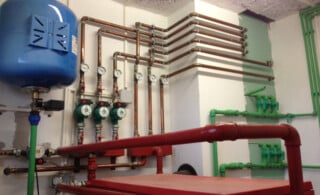 Choosing Green: Boilers and Radiator Heating Systems
Choosing Green: Boilers and Radiator Heating Systems 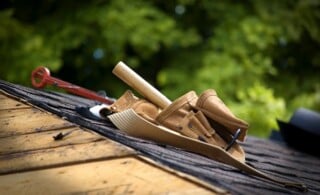 Common Small Repair Questions
Common Small Repair Questions 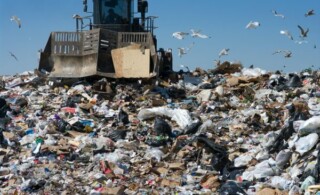 A Kid’s Guide to Reducing, Reusing & Recycling Waste
A Kid’s Guide to Reducing, Reusing & Recycling Waste 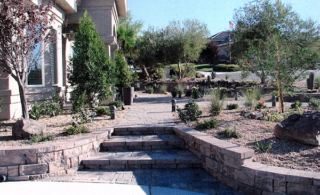 Xeriscaping: Environmentally Wise Landscaping
Xeriscaping: Environmentally Wise Landscaping 

Are You Familiar With This Topic? Share Your Experience.